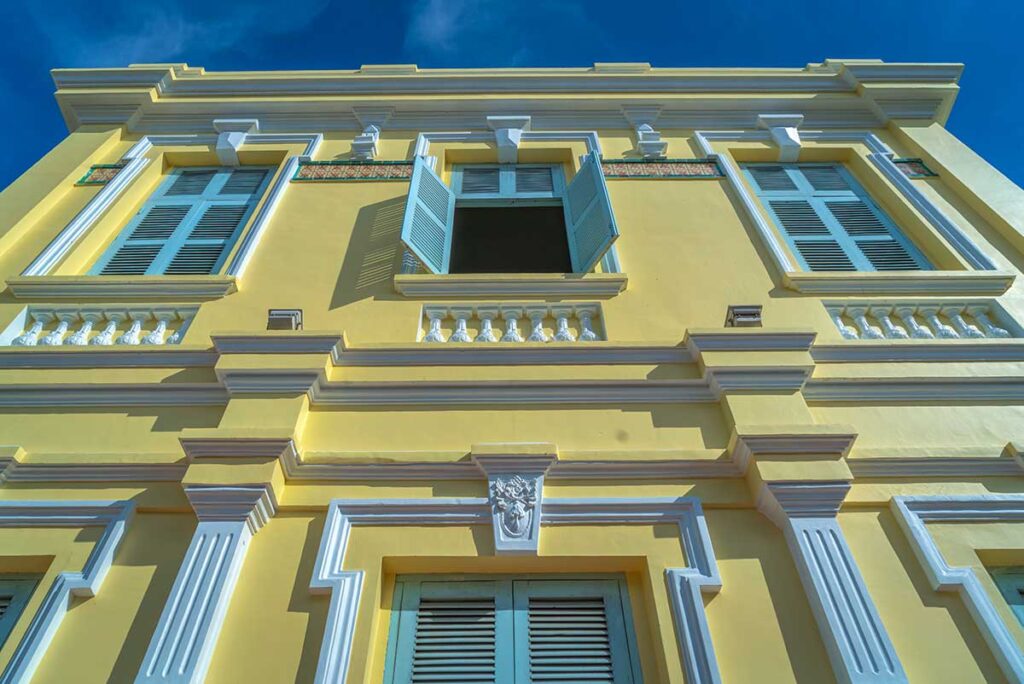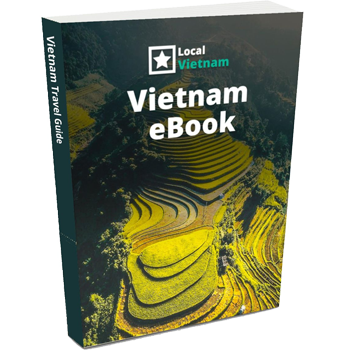What is Cong Tu Bac Lieu House?
Cong Tu Bac Lieu House, also known as the Prince of Bac Lieu’s House, is a colonial-era mansion built between 1917 and 1919. Designed by a French architect and constructed with materials shipped from France, the villa stood out at the time as one of the most impressive residences in the Mekong Delta.
The house was commissioned by Tran Trinh Trach, a wealthy landowner whose family controlled vast rice fields and salt farms. For locals, it became a symbol of foreign-influenced luxury and the extraordinary wealth of Bac Lieu’s elite. Today, it functions as both a preserved historic site and a tourist attraction where visitors can glimpse the lifestyle of Vietnam’s most infamous “playboy prince.”
History of Prince of Bac Lieu’s House
Construction & Architecture
The mansion was commissioned by Tran Trinh Trach, one of the richest landlords in southern Vietnam at the start of the 20th century. He hired a French engineer to design the house, which was built between 1917 and 1919. Most of the construction materials, from bolts to decorative details, were shipped from France and stamped with a mark of origin.
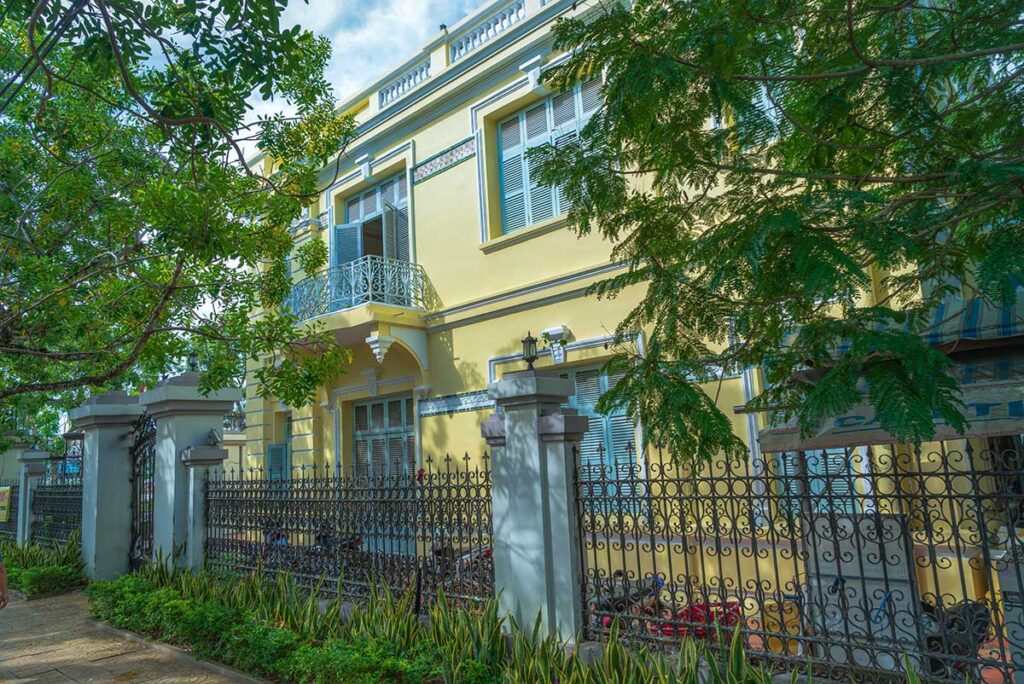
Architecturally, the house combines French colonial elegance with symbolic details rooted in local traditions. The building has a U-shaped layout, designed to keep it naturally cool in the tropical climate. Its marble staircase is divided into three sections with nine steps each — a number associated with longevity and eternity in Vietnamese culture.
The House Through the Years
At the time of its completion, the mansion was considered the largest and most luxurious private residence in the Mekong Delta. Locals referred to it simply as the “big house,” a name that captured its outsized presence in the otherwise quiet provincial town.
During its heyday, the house became associated with lavish parties, entertainment, and the flamboyant lifestyle of Tran Trinh Huy — better known as the Prince of Bac Lieu. In later decades, as his fortune faded and times changed, the mansion transitioned into a heritage site. Today it serves as a museum, open to the public with displays of furniture, relics, and family artifacts. Despite renovations and the passage of time, the core architecture and atmosphere of colonial grandeur remain intact.
Who was the Prince of Bac Lieu?
The figure behind the mansion is Tran Trinh Huy, more widely known as Ba Huy or the Prince of Bac Lieu. He was the son of Tran Trinh Trach, one of the so-called “Four Great Rich Men” of southern Vietnam, who controlled enormous areas of rice fields and salt farms. With this wealth as his inheritance, Ba Huy became the most talked-about playboy of the 1930s and 1940s.
Stories about his extravagance are legendary in Vietnam. He is said to have burned banknotes just to boil eggs, flown a private plane to inspect rice fields, and even scattered gold into rivers to feed the fish. He also organized events such as beauty contests — something unheard of in Vietnam at the time.
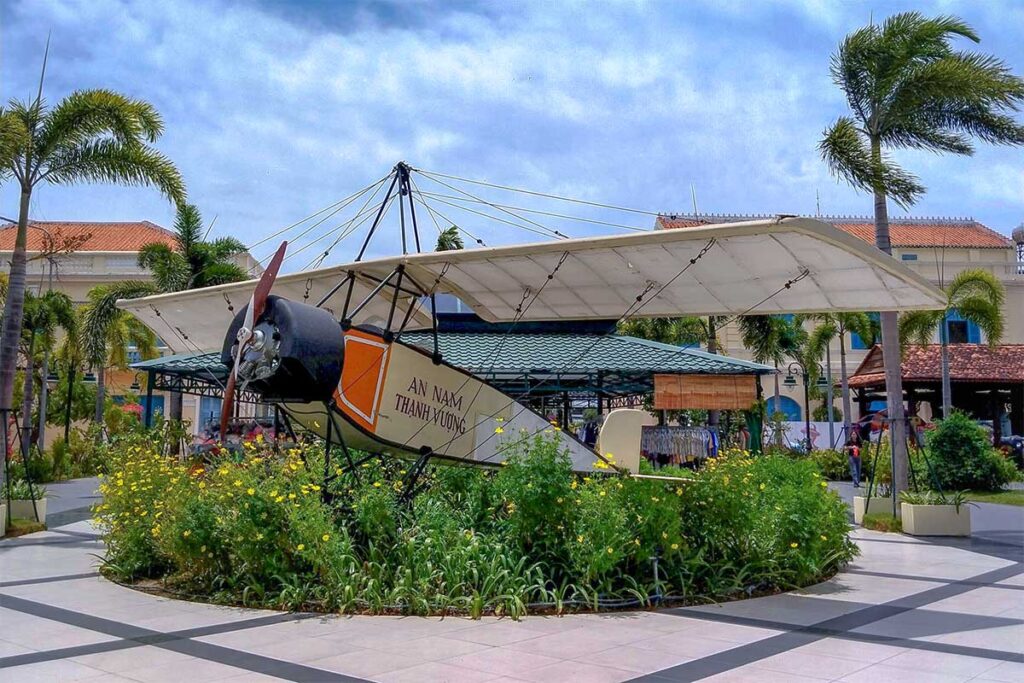
Ba Huy’s legacy is complicated. While many remember him as wasteful and flamboyant, others point out that he was also generous and charitable, donating to the poor and supporting cultural activities. Today, his name still carries a mix of fascination, admiration, and criticism — and his house has become a tangible reminder of this controversial figure.
Highlights of visiting Cong Tu Bac Lieu House
1. Colonial Architecture & Design
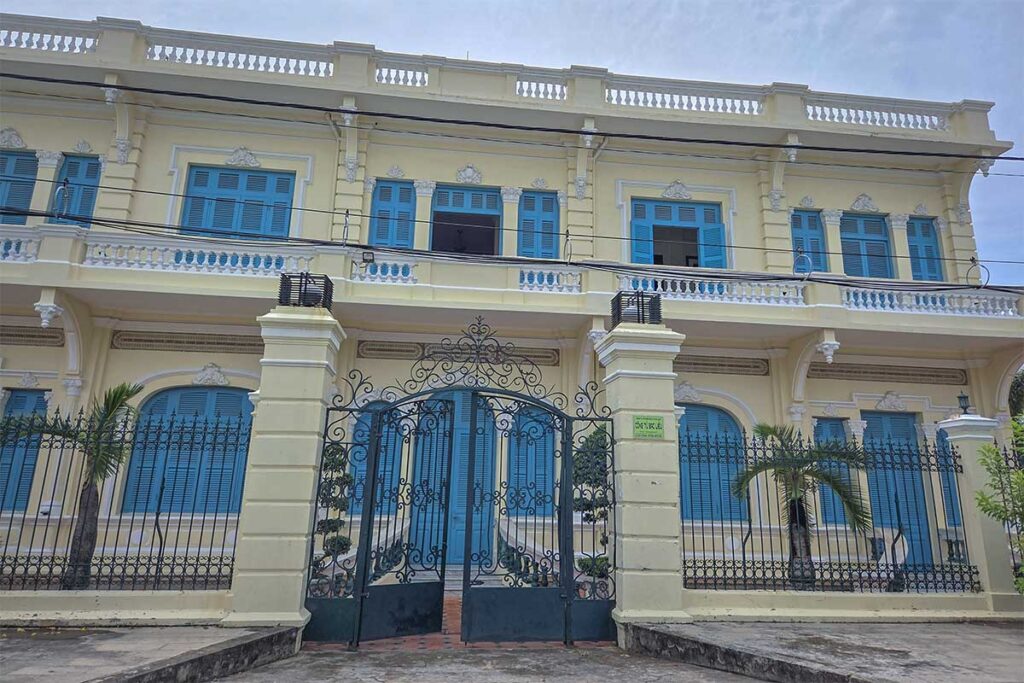
The first impression of the house is its colonial grandeur. The façade stands out in Bac Lieu with its European-style proportions, carved pillars, and patterned floor tiles. Inside, yellow-hued lamps give the rooms a warm glow that contrasts with the airy, high-ceilinged halls. It feels elegant without being overly ornate, though some parts now show their age.
2. The Grand Staircase & Symbolism
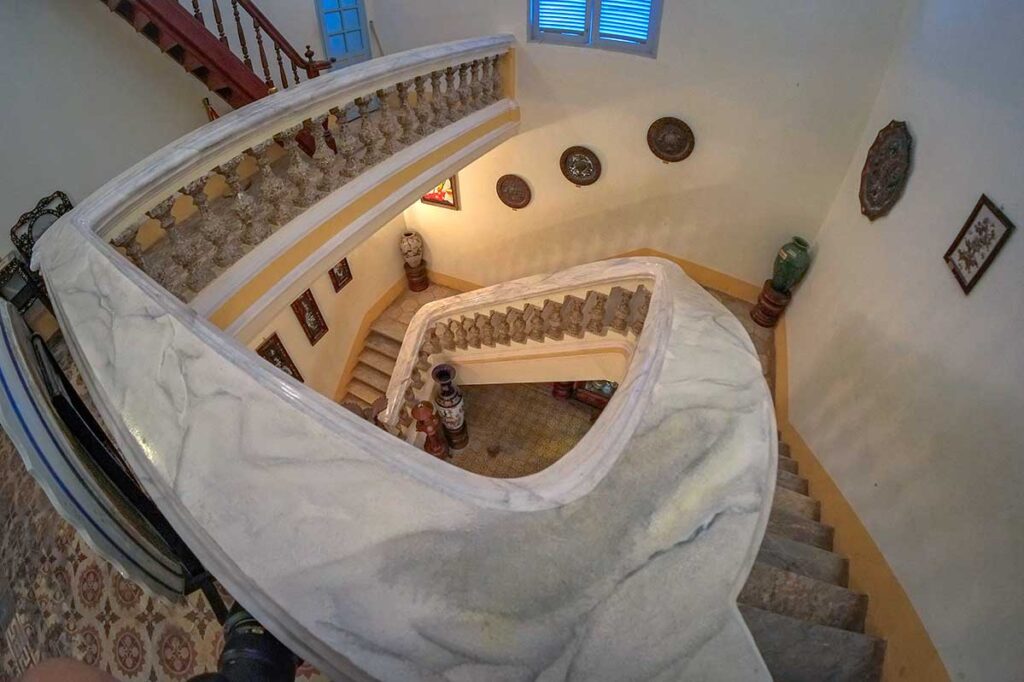
One of the most striking features is the marble staircase, divided into three sections of nine steps each — a number symbolizing longevity and eternity in Vietnamese culture. There is also a wooden staircase leading to the terrace, once used by the family to dry money, an anecdote that continues to fascinate visitors.
3. Historic Bedrooms & Living Spaces
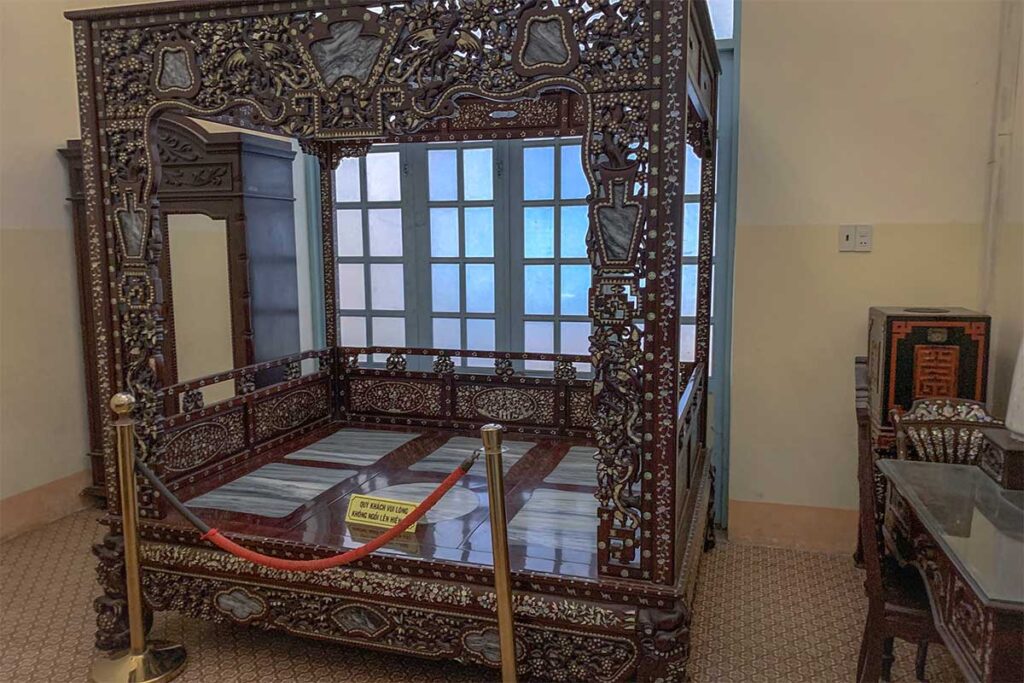
The layout includes two bedrooms downstairs and two upstairs, along with spacious halls designed for entertaining. Large windows and balconies allow plenty of light and airflow, keeping the interior surprisingly cool given the tropical climate. While sparsely decorated compared to European mansions, the size and openness reflect the wealth and social life of the family.
4. Rare Relics & Artifacts
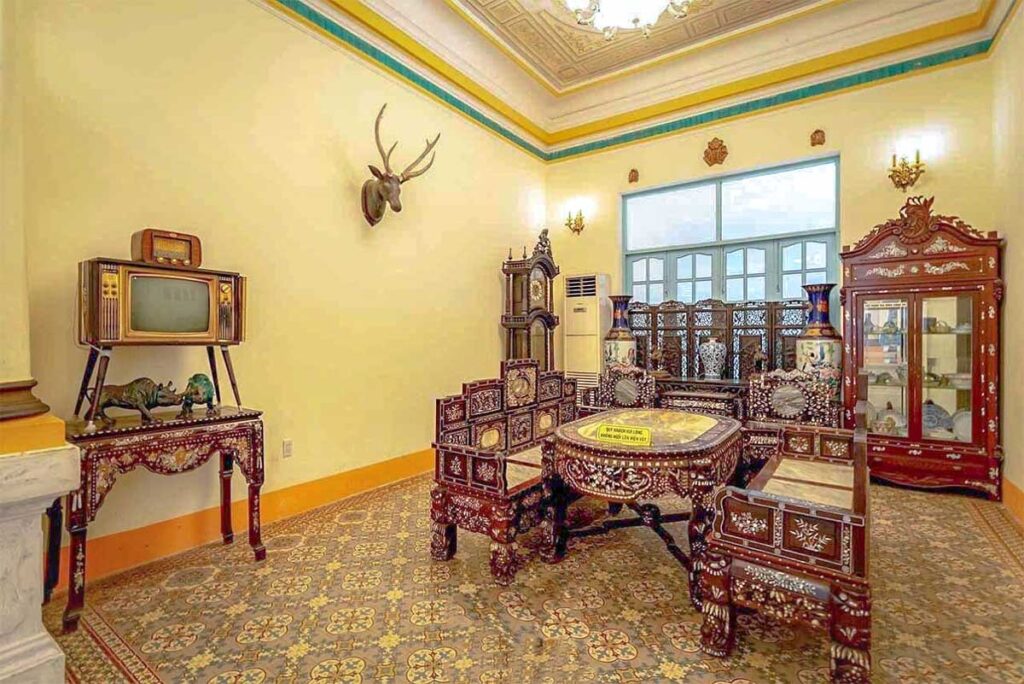
A collection of original furniture and objects is displayed throughout the house. These include antique “hot” and “cold” beds, intricately carved wooden sofas, a gramophone, and even an opium bed used by guests.
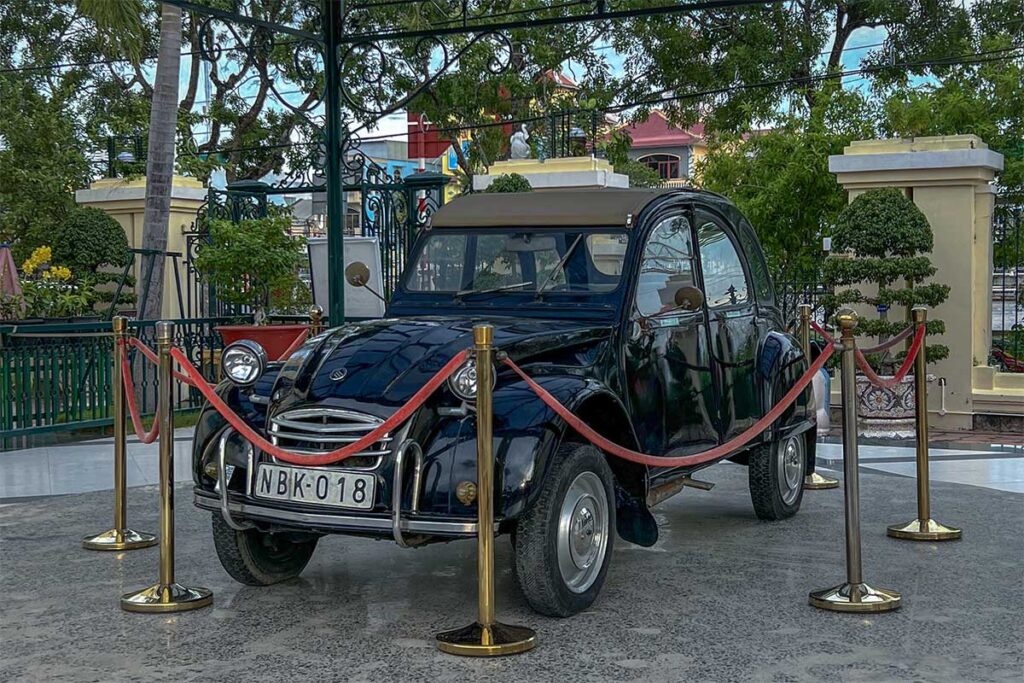
The family’s Peugeot and Ford Vedette cars are reminders of their modern lifestyle at the time, while plane memorabilia recalls Ba Huy’s private flights. Many building elements, from bolts to fittings, are still stamped with French origins.
5. The Altar Room
The altar of Tran Trinh Huy and his first wife, Ngo Thi Den, is a focal point of the visit. It is here that many visitors pause the longest, reflecting on the prince’s life and the stories tied to him. While he had many concubines, his first marriage connected him to another wealthy family in the region, reinforcing his elite status.
6. Exhibits & Museum Feel
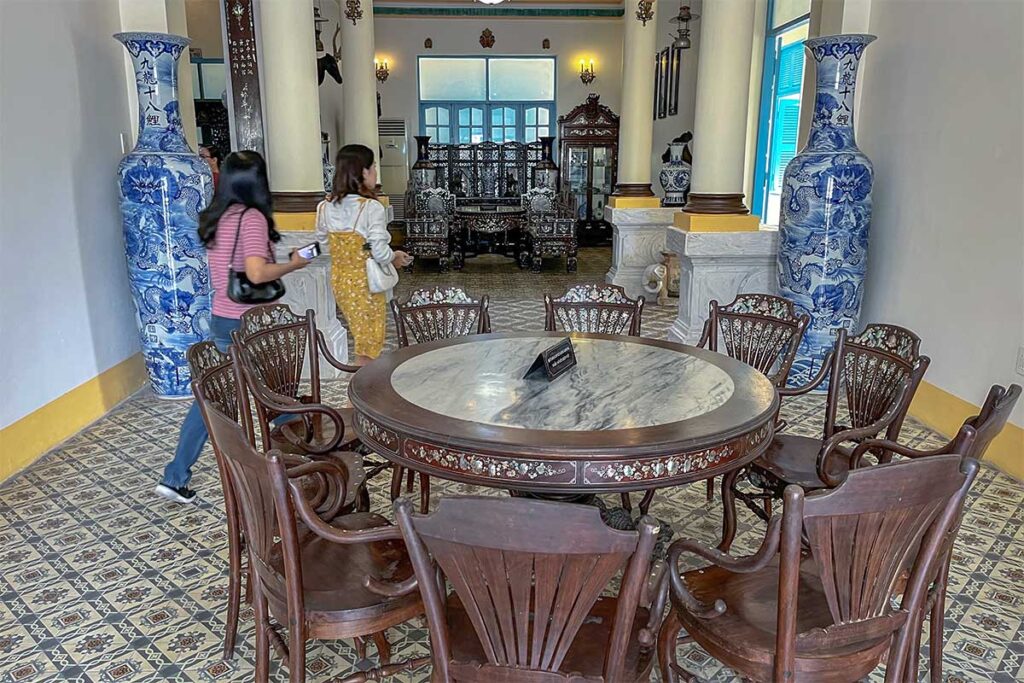
Today the house functions much like a small museum. Many objects are labeled for visitors, though the signage is only in Vietnamese and sometimes overwhelms the space, making photography difficult. On the positive side, several antiques such as the gramophone and desk telephone are still in working condition. There is also a souvenir shop and café inside, which adds convenience but also gives the house a slightly commercial feel.
Practical visiting information & Tips
Entrance Fees
Entry costs 45,000 VND for adults, and 20,000 VND for children.
Opening hours
The house is open daily from 7:00 to 18:30, including holidays.
Best time to visit
If you want to avoid crowds, try to visit on a weekday morning. Weekends and public holidays can get busy, especially with local visitors and tour groups.
Facilities
The site has toilets, a café and restaurant, souvenir stalls, and parking. There are also a few rooms marketed as a “luxury stay” inside the house, though most visitors see this more as a novelty than a serious accommodation option.
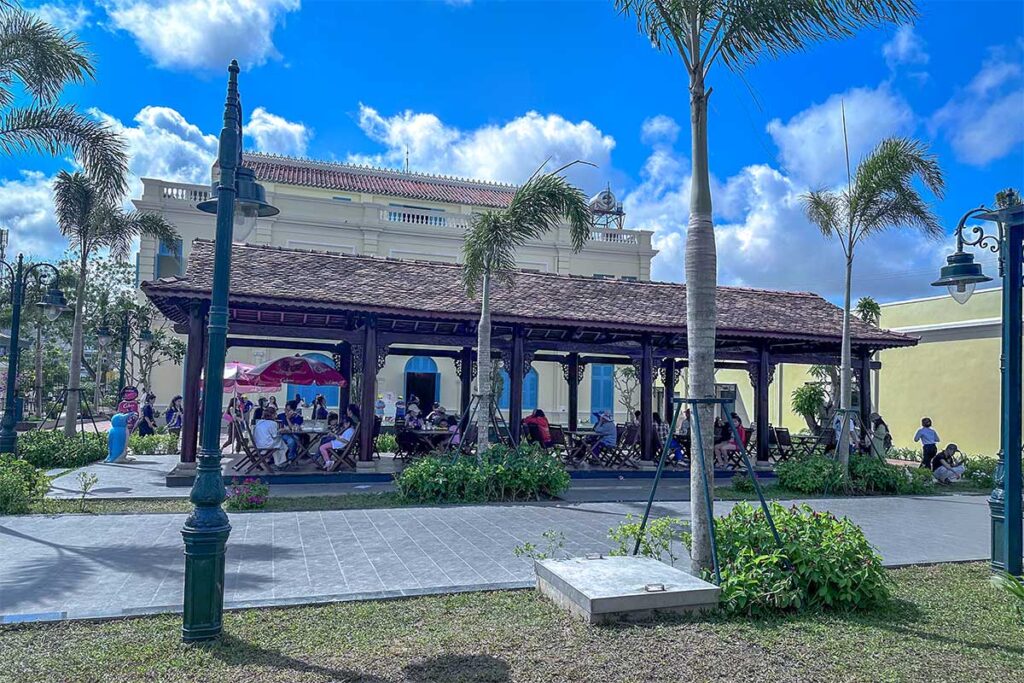
Location & How to get there
Cong Tu Bac Lieu House is located at 13 Dien Bien Phu Street, Ward 3, Bac Lieu City, right by the Bac Lieu River. Its central location makes it easy to reach by car, motorbike, or on a guided tour. From Ho Chi Minh City, the trip to Bac Lieu takes about 5–6 hours by road.
Nearby attractions to combine
- Cao Van Lau Memorial – dedicated to the father of cải lương music (1 km).
- Ghositaram Pagoda – one of the most beautiful Khmer pagodas in the south (5 km).
- Xiem Can Pagoda – a large Khmer temple often compared to Cambodian architecture (14 km).
- Bac Lieu Bird Sanctuary – natural wetlands with birdwatching opportunities (6 km).
- Tac Say Church – linked to Father Diep, an important pilgrimage site (38 km).
- Bac Lieu Wind Farm – a striking row of wind turbines along the coast (18 km).
For more tips and sights, read our Bac Lieu travel guide.
Is Prince’s House in Bac Lieu worth visiting?
The Prince of Bac Lieu’s House is one of the most culturally significant landmarks in the Mekong Delta. For many Vietnamese, it’s iconic thanks to the colorful anecdotes of Ba Huy’s extravagant life, which are still told today. The mix of colonial architecture, imported furnishings, and scandalous stories make it a unique stop.
For foreign visitors, the experience can feel a bit different. The house is an interesting glimpse into Vietnam’s colonial-era elite, but it isn’t on the same scale as European mansions or Asian royal palaces. Much of its appeal lies in the stories and symbolism rather than sheer architectural grandeur.
If you’re already in Bac Lieu, the house is worth visiting for an hour or so, especially combined with other sights nearby. As a standalone reason to travel long distances, it’s not essential — but as part of a broader Mekong Delta trip, it adds valuable context and local flavor.
